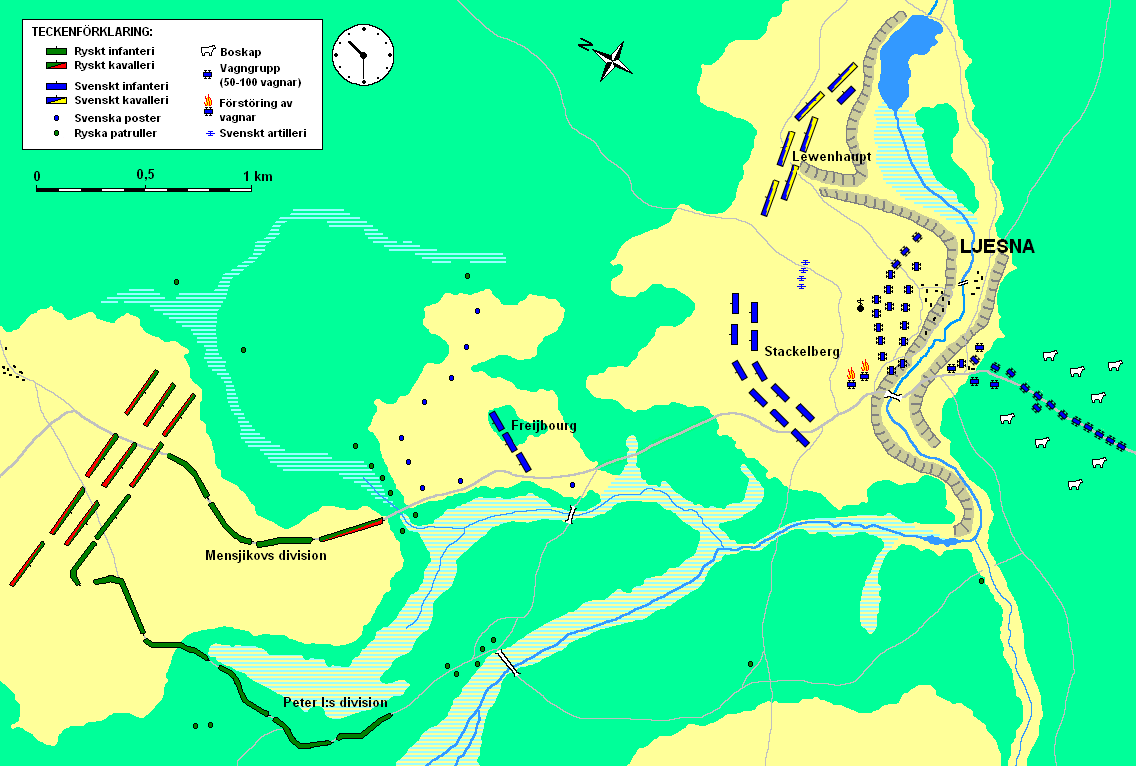|


The battle of Lesnaya between
12 000 Swedes and 18 000 Russians was called the "mother of Poltava" by the
Russian tsar Peter the Great. It was the first time a Russian army managed
to defeat the Swedes in a major battle. Although it was actually a tie on a
purely tactical level, the aftermath was disastrous for the Swedes and
thus resulted in a great victory for the Russians. General Lewenhaupt's Swedish army,
which had been on route to reinforce the Swedish main army when the Russians
intercepted it, joined the main army with only 6 000 men who had abandoned
all equipment they could not carry. Nine months later the entire Swedish
main army would suffer the same fate in the Ukraine. Lesnaya was thus the
turning point of the Russian campaign which in its turn changed the course
of the Great Northern War.
The following pages will give
an impression of how the opposing armies looked like:
According to the Swedes the battle was fought on 29 September at Liesna or
Ljesna. The Russians on the other fought the battle of Lesnaya on 28
September and according to the Poles the battle occurred 9 October at Lesna.
The Belorussian village Lyasnaya is spelled differently in different
languages and in the beginning of the 18th century there were several
different calendars in use (the calendar used today is the Gregorian
calendar which was used by the Poles in 1708).
The map above is my version of the map on page 145 in Pavel Konovalchuk's and Einar Lyth's book "Vägen till Poltava", and
it shows the armies' positions just before the battle began. Click on it to
see it in full size. |

